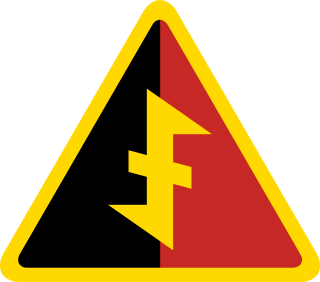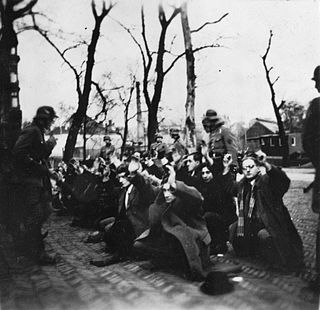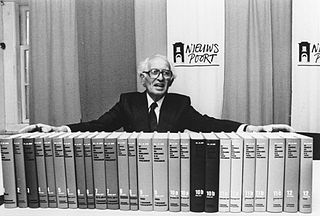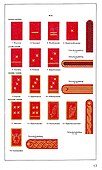
The National Socialist Movement in the Netherlands was a Dutch fascist and later Nazi political organisation that eventually became a political party. As a parliamentary party participating in legislative elections, the NSB had some success during the 1930s. Under German occupation, it remained the only legal party in the Netherlands during most of the Second World War.

Despite Dutch neutrality, Nazi Germany invaded the Netherlands on 10 May 1940 as part of Fall Gelb. On 15 May 1940, one day after the bombing of Rotterdam, the Dutch forces surrendered. The Dutch government and the royal family relocated to London. Princess Juliana and her children sought refuge in Ottawa, Canada until after the war.

The Dutch resistance to the German occupation of the Netherlands during World War II can be mainly characterized as non-violent, partly because, according to “Was God on Vacation?”, written by Jack van der Geest who was in the Dutch resistance during WWII, a 1938 Dutch law required all guns to be registered. When the Nazis entered, they found the registration list and went house-to-house knowing exactly what guns to demand. As a result, the Dutch resistance had no guns.

Schoorl transit camp, originally a Dutch army camp (1939–1940), was a Nazi concentration camp (1940–1941) near the village of Schoorl in the Netherlands.

The Reichskommissariat Niederlande was the civilian occupation regime set up by Germany in the German-occupied Netherlands during World War II. Its full title was the Reich Commissariat for the Occupied Dutch Territories. The administration was headed by Arthur Seyss-Inquart, formerly the last chancellor of Austria before initiating its annexation by Germany.

The February strike of 1941 was a general strike in the Nazi-occupied Netherlands during World War II. It was organized by the outlawed Communist Party of the Netherlands in defence of persecuted Dutch Jews and against the anti-Jewish measures and the activities of Nazism in general.
The O 9-class submarine consisted of three submarines, built for the Royal Netherlands Navy. Used for patrols in the Dutch home waters. The class comprised O 9, O 10, and O 11. Its diving depth was 60 metres (200 ft).

The Kingdom of the Netherlands During World War II is the standard reference on the history of the Netherlands during World War II. The series was written by Loe de Jong (1914–2005), director of the Dutch Institute for War Documentation, and was published between 1969 and 1991. The series contains 14 volumes, published in 29 parts. De Jong was commissioned to write the work in 1955 by the Ministry of Education, Culture and Science. The first volume appeared in 1969, and de Jong wrote his last in 1988. The final volume, containing critique and responses, appeared in 1991.

Hendrik Evert Koot was a Dutch collaborator with the German occupying forces during World War II. A member of the WA, the paramilitary wing of the National Socialist Movement in the Netherlands (NSB), he was beaten up by members of a local knokploeg in Amsterdam on 11 February 1941. His injuries were so severe that he died a few days later. His death was seized by the German authorities to start raids in the Jodenbuurt, the Amsterdam Jewish quarters, which in turn led to the February strike. Another element of Nazi retaliation was the installation of a Judenrat in Amsterdam: the Jewish Council of Amsterdam.

Lippmann, Rosenthal & Co. or LiroBank originally a Dutch Jewish bank, was seized and used by Nazis for looting Jewish property during the German occupation of the Netherlands during World War II.

Adriaan Nicolaas Johan van Hees was a Dutch actor and member of the National Socialist Movement in the Netherlands (NSB). Van Hees was trained in Amsterdam and Germany, and spent a few years in theater and film. He quit professional acting to join the NSB, giving speeches and overseeing the organization's theater division, arguing that the change he thought necessary in Dutch drama had to come from political revolution. He became depressed and suicidal when he discovered he was part Jewish; still, he tried to join the SS but was denied. After the war, he was banned from the stage for ten years, and sentenced to five years in prison.
Jacob Hiegentlich was a gay Dutch poet of Jewish descent. He committed suicide in 1940, at age 33, days after the German invasion of the Netherlands.

The Vrije Groepen Amsterdam was a federation of Dutch resistance groups in Amsterdam during the final years of World War II. The VGA was founded in late 1943 to coordinate the activities of Amsterdam's resistance groups. The groups counted some 350 members, about a fifth of whom had a Jewish or part-Jewish background. The VGA focused primarily on hiding Jews from the Nazis and caring for Jews in hiding. Their activities included distributing falsified identification documents, as well as ration cards and financial support, to Jews and others in hiding and to members of the resistance movement.

Bertha "Betsy" Bakker-Nort was a Dutch lawyer and politician who served as a member of the House of Representatives for the Free-thinking Democratic League (VDB) from 1922 to 1942.
Anarchism in the Netherlands originated in the second half of the 19th century. Its roots lay in the radical and revolutionary ideologies of the labor movement, in anti-authoritarian socialism, the free thinkers and in numerous associations and organizations striving for a libertarian form of society. During the First World War, individuals and groups of syndicalists and anarchists of various currents worked together for conscientious objection and against government policies. The common resistance was directed against imperialism and militarism.
The Nederlandse Landwacht was a Dutch paramilitary organization founded by the German occupation forces in Holland on November 12, 1943. It should not be confused with the military volunteer corps 'Landwacht Nederland', which was established in March 1943 and renamed Landstorm Nederland in October, and which became part of the Waffen-SS.
Marieke Koekkoek is a Dutch lawyer and politician for the pro-European party Volt Netherlands. She was elected to the House of Representatives in the 2021 general election owing to the number of preference votes she received. Prior to being a member of parliament, she studied law and worked as a legal intern.

Maria Aloysia Löwenfels PHJC, was a German religious sister. She converted from Judaism to Catholicism. In 1936, she fled to the convent of the Poor Handmaids of Jesus Christ in Lutterade, Netherlands. In 1938, she was confirmed as a novice. On 9 August 1942, she was murdered in the gas chambers of concentration camp Auschwitz-Birkenau. In 2015, the Roman Catholic Diocese of Limburg announced that a beatification process had been started.
The Netherlands Union was a short-lived political movement active in the German-occupied Netherlands in World War II. In its brief period of activity between July 1940 and May 1941, up to 800,000 Dutch people became members, which was about a tenth of the population at the time. It represented the largest political movement in the history of the Netherlands.
The P 1-class was a ship class of four patrol vessels that were built at the Marine Etablissement te Soerabaja in the Dutch East Indies. They were the first patrol vessels that were built in the Dutch East Indies for the Royal Netherlands Navy.
















